What Are The Best Types of Construction Grab Adhesives?
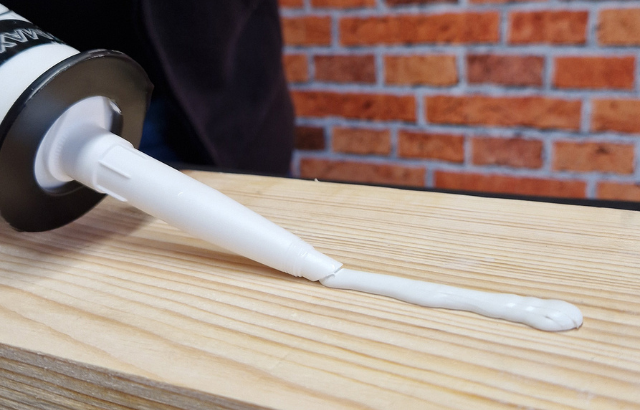
In this article ‘What Are The Best Types of Construction Grab Adhesives?’, we will look at the evolution of construction grab adhesives and explain why the latest hybrid polymer solutions are the ‘go-to’ for many construction trades.
The following points will be covered:
- What are grab adhesives used for?
- What are the types of construction grab adhesives?
- Why are hybrid polymer adhesives better than traditional grab adhesives?
- Are hybrid polymer adhesives worth the extra money?
- Recommended hybrid polymer adhesives.
What are grab adhesives used for?
Grab adhesives were originally developed to provide excellent adhesion and bonding strength. A multitude of construction applications can be performed, without the need for mechanical fixings, including:
- Bonding dado rails, architrave and skirting boards.
- Fixing window sills into place.
- Fixing decorative wall panels.
- Fixing wood, parquet and cork flooring.
- Fixing wall and floor tiles.
- Fixing backsplashes and under-mount sinks.
- Fixing wall cladding direct to wall surfaces or timber battens.
- Fixing battens directly onto walls.
- Fixing insulation panels.
- Bonding carpet gripper systems to floors.
- Bonding stair nosing to concrete or wooden stairs.
- Fixing polyester, wood, PVCu or metal thresholds.
- Fixing signs, plastic boxes, decorative frames, wall sockets and junction boxes.
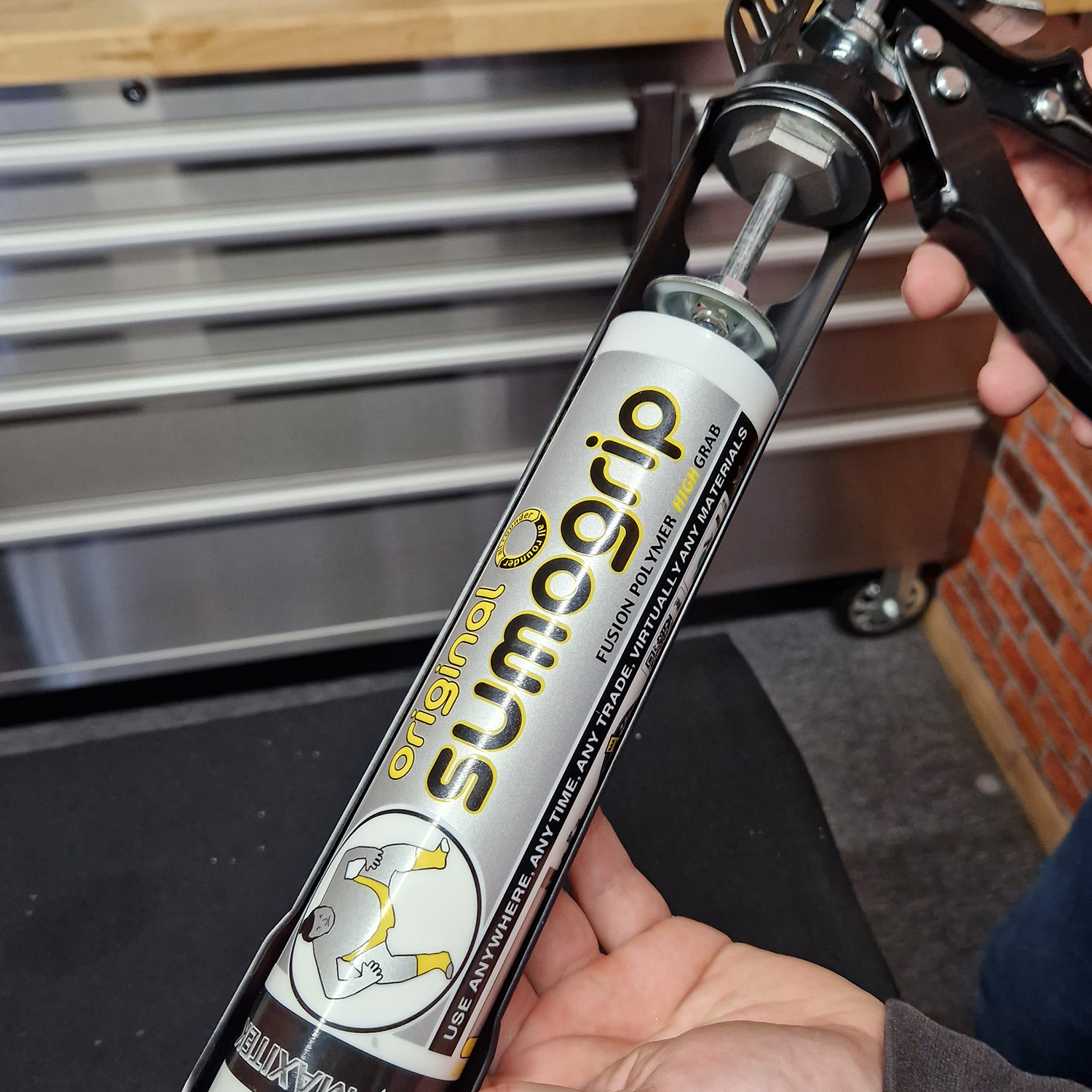
What Are The Best Types of Construction Grab Adhesives?
There are a number of construction grab adhesives on the market currently, spanning various price points. The traditional grab adhesives, such as Pinkgrip, Gripfill, GripTite and No Nails are generally lower priced, whereas the latest hybrid polymer adhesives, including Stixall, Sticks Like, Fixall, Sumogrip, OB1 and CT1, tend to cost a little more.
The big question is… ‘Are the hybrid polymer adhesives worth the extra money’?
Hybrid polymers are the latest generation construction adhesives, that have replaced many traditional grab adhesives. When they were first launched, the difference in price was quite significant, but nowadays the price points of polymer adhesives and traditional grab adhesives are getting closer together. Fundamentally, what are the major benefits of hybrid polymer adhesives versus traditional grab adhesives?
Why are hybrid polymer adhesives better than traditional grab adhesives?
This part of the article highlights the top 10 tangible benefits of hybrid polymer adhesives compared to traditional grab adhesives.
- Hybrid polymer adhesives can often be used to seal as well as bond building materials, whereas traditional grab adhesives are purely used for sticking applications. This additional application option makes hybrid polymers a single solution for almost every sealing and bonding application. Some can even be used as a filler or caulk, to fill small gaps or holes, with no shrinkage or cracking.
- Hybrid polymer adhesives are much more flexible than traditional grab adhesives. Flexible adhesives are essential when bonds come under dynamic loads, as flexibility is what will maintain the strength of a bond when exposed to shock or vibrations. Flexible adhesives spread the tension along the surface area, minimising the potential for failure. Conversely, traditional grab adhesives will set solid, so if the bond is broken under load or becomes brittle over time, it will fail
- The initial grab of hybrid polymer adhesives is often better than traditional grab adhesives, negating the requirement for propping up or clamping items, whilst waiting for the adhesive to cure. There are thicker polymer adhesives available, such as Fixall X-treme, Power Grab ‘n’ Bond and Maximum Torque, with incredible initial grab, but these tend to be harder to squeeze out of the tube. It can also be difficult to press substrates firmly into place, due to the high viscosity of the product, leaving unsightly gaps. When dispensing these types of products, it is essential a high-trigger ratio mastic gun is used to avoid hand fatigue. You’ll know whether it’s going to be tough to dispense, as the nozzles are often pre-cut with a sizable opening or aperture.
- Hybrid polymer adhesives don’t skin over too quickly, whereas traditional grab adhesives can form a skin in as little as twenty seconds, significantly compromising bonding performance. This is particularly noticeable when sticking long lengths, such as skirting boards, as the clock is ticking to get the substrate in place before the grab adhesive starts to cure. Compared to traditional grab adhesives, hybrid polymer adhesives will stay tacky for much longer, allowing the user plenty of time to apply the full-length bead of adhesive and also ensure the item is pressed into place accurately.
- Hybrid polymer adhesives stick to most surfaces including wood, metal, concrete, brick, stone, masonry, plastics, fibreglass, ceramics, tiles, rubber, and glass… to name just a few. The only substrates hybrid polymer adhesives won’t generally stick to are polyethylene, polypropylene and PTFE – also known as Teflon. Traditional grab adhesives will also stick to a large proportion of construction materials, but solvent-based products will attack some of the more sensitive materials, such as plastics or polycarbonates. Some traditional grab adhesives also stipulate that one of the materials must be porous, limiting its use on a number of potential applications. The beauty of hybrid polymers is that you can pretty much guarantee it’ll stick!
- Hybrid polymer adhesives will stick to wet, damp and dry surfaces, whereas traditional grab adhesives have to be used in perfectly dry conditions. The various brands of hybrid polymer adhesives will proudly announce that they can even be used underwater! Most hybrid polymer adhesives will work underwater, as they’re moisture curing. The ability to work in wet or damp conditions makes hybrid polymers ideal when performing tasks outside in the elements…, especially with the inconsistent UK weather conditions!
“Tip: the moisture in the air cures hybrid polymer adhesives. When applying to surfaces, never dispense a bead around the entire perimeter of the substrate. Parallel lines are better, open at either end for the air to circulate effectively. This will significantly reduce cure times, and ensure the final maximum bond strength is achieved”
- Hybrid polymers are silicone-free and can be painted over, which is not necessarily a significant benefit when the hybrid polymer is being used as an adhesive, but when used as a sealant or filler, overpainting is often essential.
- Hybrid polymer adhesives are safer for the user, odourless and contain no harmful solvents or isocyanates, whereas most traditional grab adhesives are solvent-based, producing a pungent smell when used, potentially causing respiratory problems or skin irritations – and in some cases, they can even be carcinogenic. Water-based solvent-free grab adhesives are available, but the performance of these products can be compromised.
- Hybrid polymer adhesives are better for the environment – they are generally low or no VOC – volatile organic compounds. Low-VOC products help to reduce the concentration of contaminants in the ozone layer, as well as in groundwater and landfill sites. Many larger organisations and construction sites now stipulate that low-VOC products are used, making hybrid polymers the ideal option for bonding and sealing applications.
- Hybrid polymers are not as susceptible to extreme temperatures, whether being applied or still being stored in the tube. Solvent or water-based traditional grab adhesives cannot be applied in temperatures below +5°C, whereas hybrid polymers can often be applied at below freezing. When you consider the UK ambient outside temperatures in the winter months, this is a considerable factor.
What Are The Best Types of Construction Grab Adhesives?- A Summary
We’ve highlighted the top 10 tangible benefits of hybrid polymer adhesives compared to traditional grab adhesives. More and more hybrid polymer adhesives are entering the UK market, some with catchy brand names and often featuring slightly different properties and benefits. Originally developed in Japan, MS polymers have come a long way, replacing not only traditional grab adhesives but also silicone sealants, decorators’ caulks and polyurethane adhesives. They’ve become the ‘does all’ solution to many construction trades, as the user knows that the product in their mastic gun will do the job in hand!
“When you consider all the universal application benefits of hybrid polymer adhesives, versus traditional grab adhesives – alongside the user safety and environmental gains – plus the fact that the price points of many hybrid polymer adhesives are getting closer to the cost of traditional grab adhesives, I believe it’s definitely worth paying the extra and embracing the latest and sustainable adhesive technologies’”
Recommended Hybrid Polymer Adhesives
Without a doubt, my recommendation would be the Sumogrip family of products. Developed and manufactured in Europe, these fusion hybrid polymers meet the strictest requirements for the construction industry and are comparable with other premium multi-purpose products such as CT1 or OB1 – with a lower price tag for the trade.

Sumogrip Original was the first Sumogrip product launched over ten years ago. An ultimate high grab adhesive, Sumogrip Original outperforms not only traditional grab adhesives but most other hybrid polymer adhesives too. White in colour, Sumogrip Original can also be used to seal, both internally and externally, containing a powerful fungicide – perfect for sanitary applications. That’s not all… it can also be used to fill small cracks and gaps, with no shrinkage or cracking. A true all-rounder.

Sumogrip Black is the identical high grab formula to Sumogrip Original, but black in colour. Perfect for similar adhesive or sealant applications to Original, the black colour has proven incredibly popular for roofing and guttering applications, where colour is important to blend in with the materials. Sumogrip Black is also a true all-rounder.

Sumogrip Invisible does not have the same incredible instant grab as Original and Black, due to the formula requirements to have a final cured product that is transparent in colour, but the ultimate bond strength is comparable. Sumogrip Invisible or ‘clear’ is suited to any sealing applications, containing the ultimate XS1 grade of fungicide, and can also be used for many bonding applications. Sumogrip Invisible is perfect for bonding mirrors, as the crystal clear formulation avoids shadowing through the mirror backing.

Sumogrip Superfast is the latest addition to the Sumogrip family. A rapid set construction adhesive with huge holding strength after just 20 minutes and an unrivalled final bond strength after just 3 hours, giving peace of mind that the substrate has stuck! White in colour, Sumogrip Superfast can also be used as a sealant, but rapid bonding is its primary application.
A four-tube assortment pack is available, containing one of each type of Sumogrip – ideal for trialling the products. There are also bundle packs available, which are full boxes that include the perfect mastic gun.
The entire range of Sumogrip products is CE and UKCA-approved, with additional specific BS EN approvals for various applications. Click on the products below for more information.

Maxitek Sumogrip Adhesive & Sealant Trial Pack Offer x4 Tube

Maxitek Sumogrip Foil Grab Adhesive 400ml
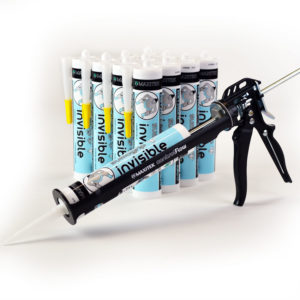
Maxitek Sumogrip Invisible x12 & MG2 Control Flow Gun Bundle
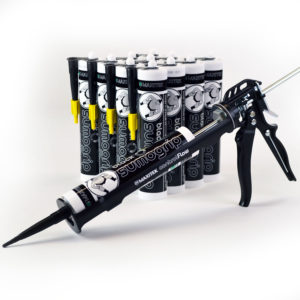
Maxitek Sumogrip Black x12 & MG2 Control Flow Gun Bundle

Maxitek Sumogrip Foil Grab Adhesive x25 & MG400 Gun Bundle
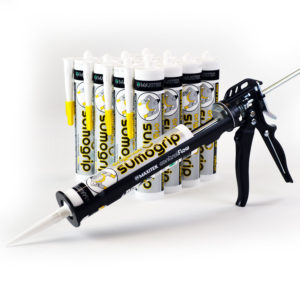
Maxitek Sumogrip Original x12 & MG2 Control Flow Gun Bundle

Joint Managing Director, Protrade
Des has over 30 years of experience at Protrade, having worked in the capacity of Sales Co-ordinator, Account Manager, and product development, culminating in being appointed Joint Managing Director in 2018.



